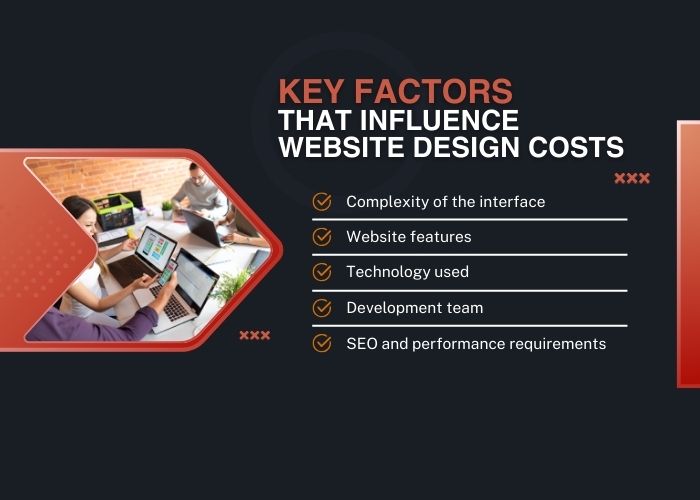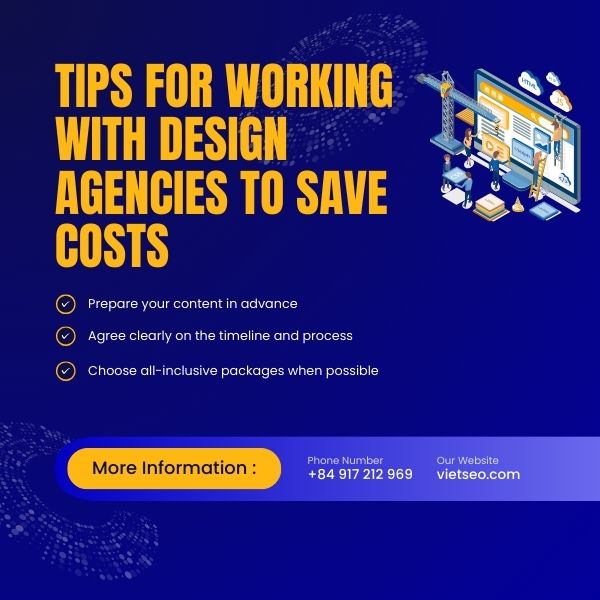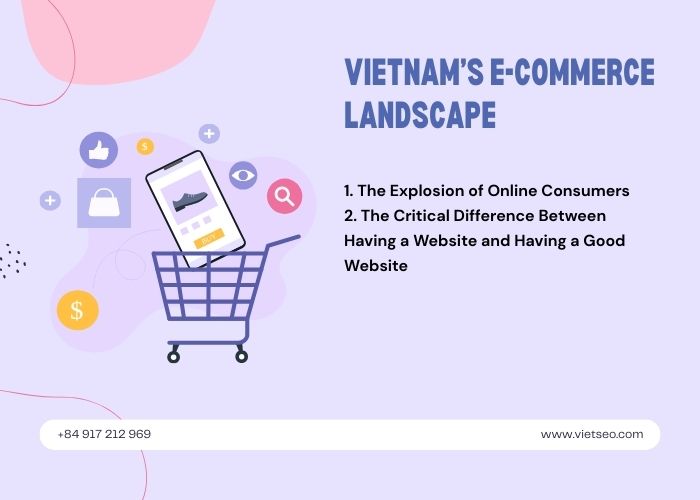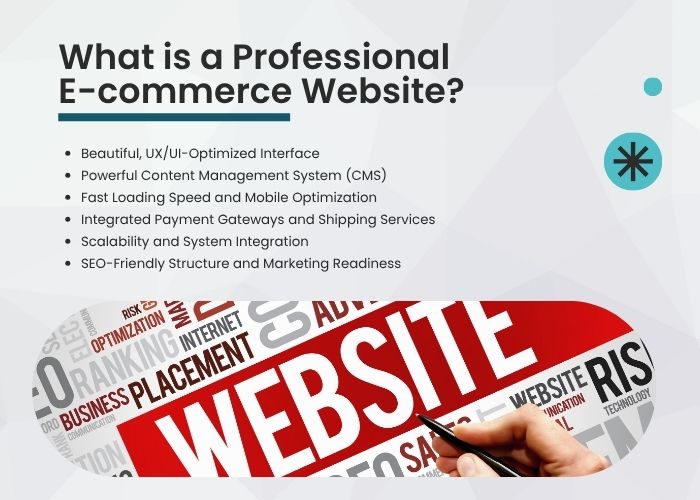Affordable Website Design: Cut Costs Without Sacrificing Quality
Whether you are a company trying to attract new customers, an individual building an online store, or a startup testing a product idea, having a professional website is one of the first and most important steps.
The challenge is that not everyone has the budget to invest in premium design packages right from the start. This is where affordable website design comes in—a practical and cost-effective solution for:
- New startups that need to establish an online presence quickly.
- Small and medium-sized businesses looking to grow without overspending.
- Personal online shops that want a professional look while keeping costs low.
- Product testing or pilot projects where a full-scale investment is not yet necessary.
But “affordable” doesn’t have to mean “cheap” or “low quality.” With the right strategy and a smart approach to budgeting, you can absolutely build a website that is professional, SEO-friendly, and effective in attracting customers—without draining your resources.
In this article, we’ll walk you through practical ways to balance quality and cost, including:
- Proven methods to reduce website design expenses while maintaining professional standards.
- Common mistakes that often lead to unnecessary spending.
- Tips for collaborating with web design agencies to get the best value for your money.
- Key trends in 2025 that will help you create a modern, attractive, and affordable website.
By the end, you’ll have a clear roadmap for creating a website that not only fits your budget but also supports your long-term business goals.
What Does “Affordable Website Design” Really Mean?
When talking about affordable website design, many people mistakenly assume it means a low-quality or poorly built site. In reality, “affordable” doesn’t mean “bad” or “unusable”—it simply refers to solutions that help you get a professional website at a lower cost than the market average.
An affordable website design should still include the essential elements needed for an effective online presence, such as:
- A professional, visually appealing interface.
- A user-friendly experience that makes it easy for visitors to navigate.
- Basic SEO optimization so your site can be found on search engines.
- Stable loading speed for smooth performance.
- Compatibility across different devices, from desktop to mobile.
- Transparent pricing with no hidden costs or unreasonable maintenance fees.
At the same time, “affordable” should never mean:
- Outdated or unattractive design.
- No warranty, customer support, or technical assistance.
- Websites that don’t work properly on mobile or other devices.
- A structure that makes it difficult—or impossible—to scale as your business grows.
In short, affordable website design is about striking the right balance between cost and quality, ensuring you get a functional, modern, and future-ready website without overspending.
Key Factors That Influence Website Design Costs
If you want to reduce expenses without sacrificing quality, it’s essential to first understand what drives website design costs. Several elements can significantly impact the final price.
1. Complexity of the interface
- A simple interface with a clean layout and minimal animations usually costs less.
- A complex interface with many custom graphics, interactive elements, or advanced animations requires more design and development time, leading to higher costs.
2. Website features
- Basic websites with only essential pages—such as Home, About, Services/Products, Blog, and Contact—are more affordable.
- Websites that include advanced features like:
- Online ordering systems
- Secure payment gateways
- Online booking or reservations
- Membership accounts and logins
3. Technology used
- CMS platforms like WordPress, Joomla, or Shopify offer ready-made structures and plugins, which reduce both time and cost.
- A fully custom-coded website, while offering maximum flexibility, demands more specialized skills and development hours, making it significantly more expensive.
4. Development team
- Hiring a freelancer is often cheaper upfront, but it comes with higher risks such as lack of long-term support, inconsistent quality, or missed deadlines.
- Working with a reputable design company may cost more, but the investment includes professional project management, warranties, ongoing maintenance, and technical support.
5. SEO and performance requirements
- A standard website without advanced optimization is more affordable.
- However, if you need thorough SEO setup, lightning-fast loading speeds, and performance fine-tuning, expect to invest a bit more since these improvements require additional expertise and effort.
In short, the cost of website design is not fixed—it depends heavily on your goals, features, and expectations. By clearly defining your needs from the beginning, you can control your budget more effectively and avoid unnecessary expenses.
How to Reduce Website Design Costs Without Sacrificing Quality
Cutting costs doesn’t mean you have to compromise on professionalism or effectiveness. By making smart choices from the beginning, you can create a high-quality website that fits within your budget. Here are some proven ways to save:
1. Use ready-made website templates
- Modern templates are designed to be professional, mobile-friendly, and SEO-ready.
- Most cost between $20–70, which is much cheaper than hiring a designer to create a layout from scratch.
- They also save time, helping you launch faster without sacrificing quality.
Pro tip: Always buy from reputable sources like ThemeForest, TemplateMonster, or Elegant Themes to ensure quality and support.
2. Choose popular CMS platforms
- WordPress is the most popular and cost-effective choice for affordable yet powerful websites.
- It requires little coding knowledge, is easy to manage, and has a huge ecosystem of free or low-cost plugins.
- With the right setup, you can add advanced features without paying for custom development.
3. Select only the features you truly need
- Many businesses fall into the trap of thinking “the more features, the better.” In reality, unnecessary features increase complexity and costs.
- Focus on features that actually help convert customers and support your business goals.
- For startups, it’s often best to launch with a MVP (Minimum Viable Product) website, then scale up once you start generating revenue.
4. Clarify requirements before starting
- One of the biggest reasons for cost overruns is constantly changing requirements during the design process.
- Avoid this by preparing a clear and detailed brief from the start, including:
- The type of interface you want.
- The number and type of pages required.
- Essential features.
- SEO and performance expectations.
- Project deadlines.
5. Use affordable but reliable hosting
- Hosting is an ongoing cost that directly affects your site’s performance.
- Instead of free hosting (which is often slow, insecure, and unreliable), choose affordable but reputable providers such as Hawkhost, Azdigi, or Namecheap.
- This ensures your site loads quickly, stays secure, and delivers a professional user experience.
6. Build long-term partnerships with design agencies
- If you plan to develop multiple websites or digital projects, negotiate a long-term collaboration with one agency.
- This not only helps reduce costs through bulk or loyalty discounts but also ensures the agency becomes familiar with your brand and processes—saving time and effort in future projects.
The key takeaway: focus on what truly matters—professional design, usability, SEO, and scalability—while trimming away unnecessary extras. That’s how you keep costs low without lowering the quality of your website.
Costly Mistakes to Avoid in Affordable Website Design
Trying to save money on a website is understandable—but going about it the wrong way can end up costing you far more in the long run. Here are some common mistakes to avoid:
1. Choosing extremely cheap, low-quality services
- Some providers advertise website design for only 500,000 – 1,000,000 VND. While tempting, these services are usually a trap.
- The websites delivered often have outdated interfaces, poor responsiveness, no SEO optimization, and weak security—making them easy targets for hacking.
- In many cases, businesses end up having to rebuild their entire website from scratch, spending far more than if they had invested in a reputable service from the beginning.
2. Building a “one-time use” website with no scalability
- Your business will grow, and so should your website.
- If you choose a closed-code or overly restrictive platform, expanding features later may be impossible.
- This often forces companies to start over with a completely new design—wasting both time and money.
Always think long term: choose platforms and designs that allow for upgrades and future expansion.
3. Skipping a clear contract
- Without a written contract, hidden costs and misunderstandings are almost inevitable.
- A proper contract should clearly outline:
- The full cost of the project.
- Timeline and key milestones.
- Deliverables (what exactly you will receive).
- Warranty and post-launch maintenance.
- This protects both you and the design agency, ensuring the project runs smoothly and stays within budget.
Bottom line: going for the cheapest option or skipping professional processes might save you money upfront, but it almost always leads to higher costs later. Affordable website design should be about smart investment, not cutting corners.
Affordable Yet High-Quality Website Design Trends for 2025
The landscape of web design is evolving rapidly, and businesses now have more opportunities than ever to build affordable websites without sacrificing quality. Here are some key trends shaping 2025:
1. Leveraging AI in the design process
- AI-powered tools such as ChatGPT, MidJourney, Canva Pro, and Figma AI are transforming how websites are planned and designed.
- They speed up the creation of wireframes, layouts, and even content, significantly reducing the time and cost of UI/UX design.
- This makes professional design more accessible, even for businesses with limited budgets.
2. Headless CMS and static site generators
- Technologies like Next.js and Gatsby are gaining popularity for their ability to create ultra-fast, highly secure, and SEO-friendly websites.
- Because they separate the front end from the back end, they are lighter, easier to scale, and often more cost-efficient in the long run.
- These platforms are especially suitable for showcase websites, blogs, and landing pages that need speed and stability without heavy infrastructure.
3. Affordable landing pages for idea validation
- Instead of building a full-scale website immediately, many startups and small businesses are turning to landing pages to test ideas.
- These single-page websites are affordable, quick to launch, and perfect for validating products or services before making larger investments.
- Popular tools include Unbounce, Landingi, Instapage, or Elementor for WordPress.
- Once the idea proves successful and revenue starts flowing, businesses can then expand into a full-featured website with confidence.
The takeaway: in 2025, affordability and quality are no longer opposites. By embracing AI, modern frameworks, and smart testing strategies, businesses can create professional websites that grow with them—without breaking the bank.
Tips for Working with Web Design Agencies to Save Costs
Partnering with a professional web design agency doesn’t have to be expensive. In fact, by approaching the collaboration strategically, you can reduce costs and still achieve high-quality results. Here are some practical tips.
1. Prepare your content in advance
- One of the biggest cost drivers in website design is content creation—text, images, and graphics.
- If you can provide well-prepared content (such as product descriptions, photos, blog drafts, or brand guidelines), the agency won’t need to spend time and resources creating them for you.
- This not only lowers the project cost but also avoids delays caused by repeated back-and-forth communication.
2. Agree clearly on the timeline and process
- A well-defined timeline helps agencies allocate resources efficiently and keep costs under control.
- Constantly changing requirements or missing deadlines often leads to extended working hours—something you’ll likely be billed for.
- Be clear about your expectations, provide timely feedback, and stick to the agreed process to keep the project on budget.
3. Choose all-inclusive packages when possible
- Instead of paying for each feature separately, consider opting for all-inclusive website design packages.
- These packages typically cover everything you need—design, development, basic SEO setup, and sometimes even hosting—making it easier to control costs.
- Bundled pricing is often more affordable than paying for individual add-ons later.
By preparing in advance, setting clear expectations, and choosing the right pricing model, you can get the most value from your partnership with a design agency—ensuring a smooth process and a professional website without unnecessary expenses.
When Should You Invest in High-End Website Design?
While affordable website design is ideal for startups and small businesses, there comes a time when investing in a premium solution makes sense. You should consider upgrading to a high-end website when:
- Your product or service is already generating steady revenue. At this stage, a more polished and feature-rich website can help you scale further.
- Your goal is to establish a strong brand identity. A custom design with unique visuals, storytelling, and advanced features can set you apart from competitors.
- You need complex functionality or an advanced customer experience. For example, large e-commerce platforms, online learning systems, or multi-language portals often require custom development.
- You have advanced SEO strategies or strict security requirements. High-performance websites with optimized architecture and enterprise-level security features are essential when your business reaches a certain size.
For startups and small businesses, however, it’s usually wiser to begin with an affordable, cost-optimized website. This gives you a solid foundation to test the market, attract customers, and generate revenue before committing to a larger investment.
Conclusion
Affordable website design should never mean building a site just for the sake of having one. When done strategically, you can absolutely create a website that is:
- Professionally designed with a modern interface.
- Compatible across all devices and screen sizes.
- Optimized for basic SEO to improve visibility on search engines.
- Fast, stable, and user-friendly.
- Scalable to support your future growth.
The key is to optimize costs smartly—not to blindly chase the cheapest option. Ultra-low prices often lead to wasted time, money, and frustration when you eventually need to rebuild from scratch.
Instead, focus on choosing a reliable design agency, clearly defining your requirements, and ensuring quality from the very beginning.
Remember: your website is more than just an online presence—it’s a long-term digital asset for your business. Treat it as an investment, not an expense, and it will pay off in growth, trust, and revenue.




